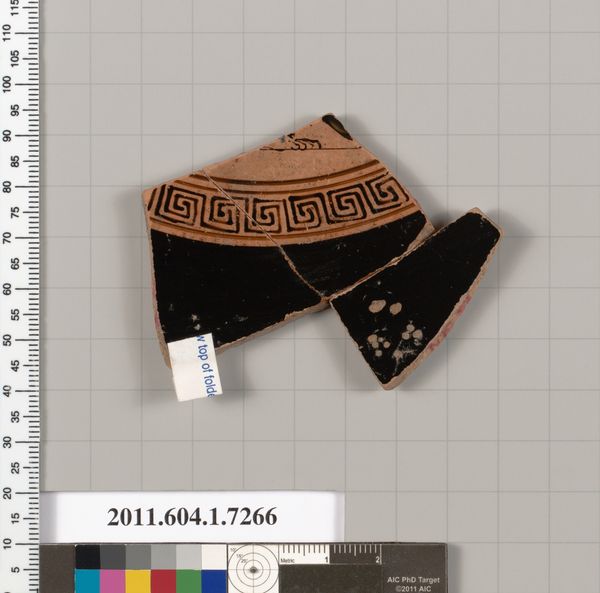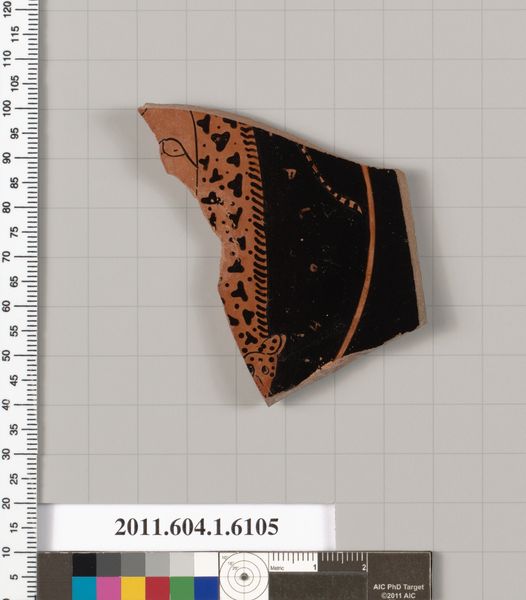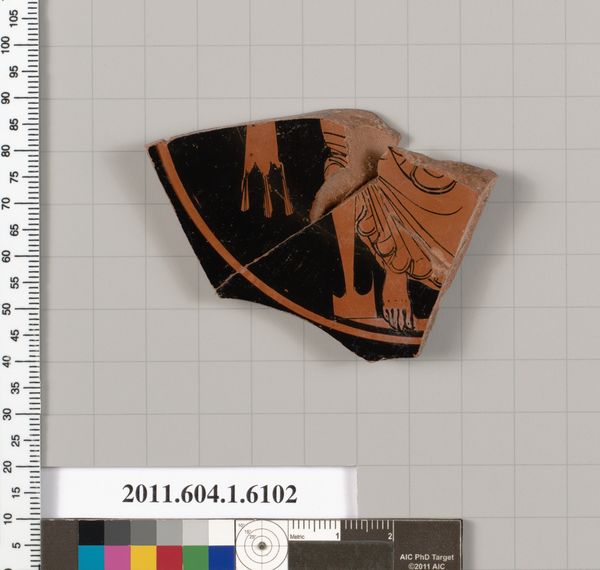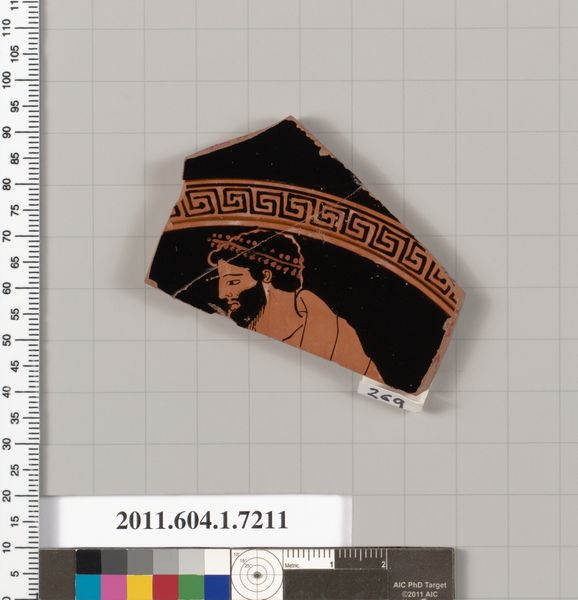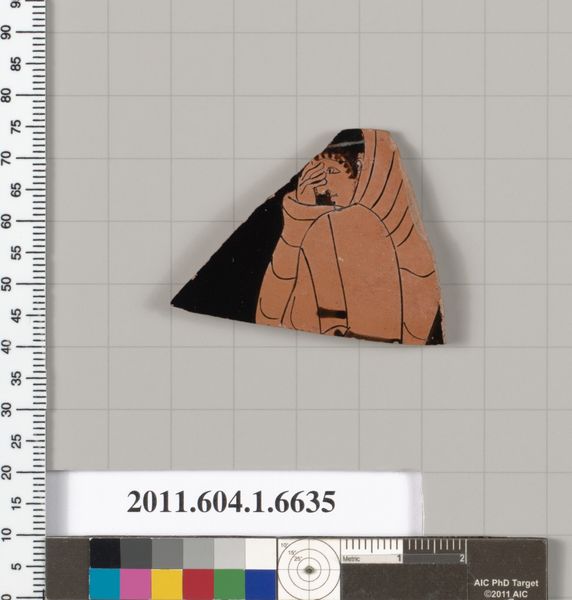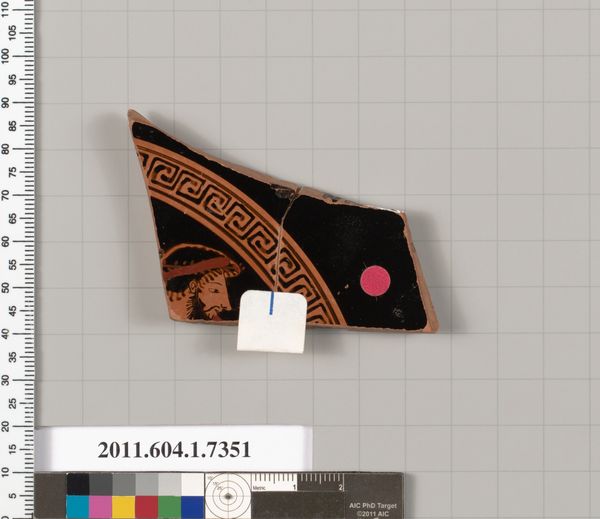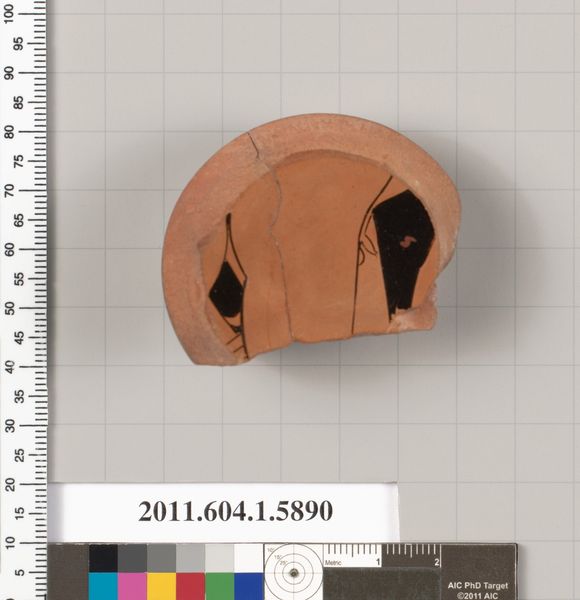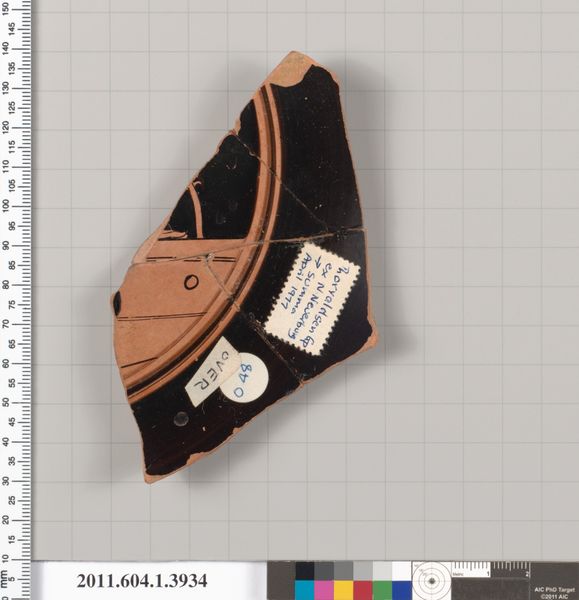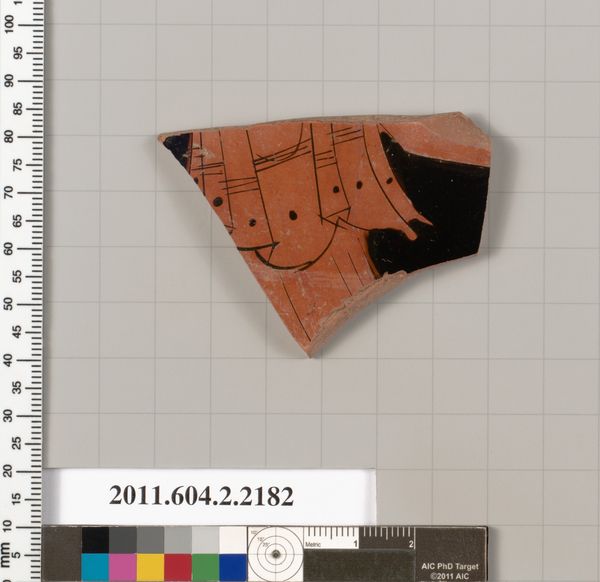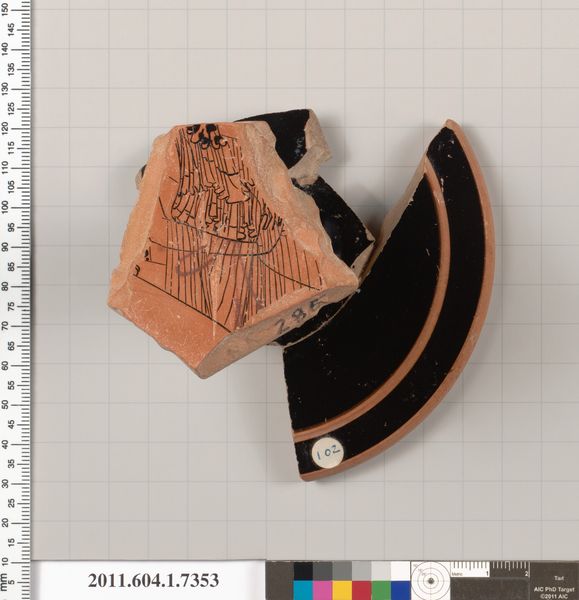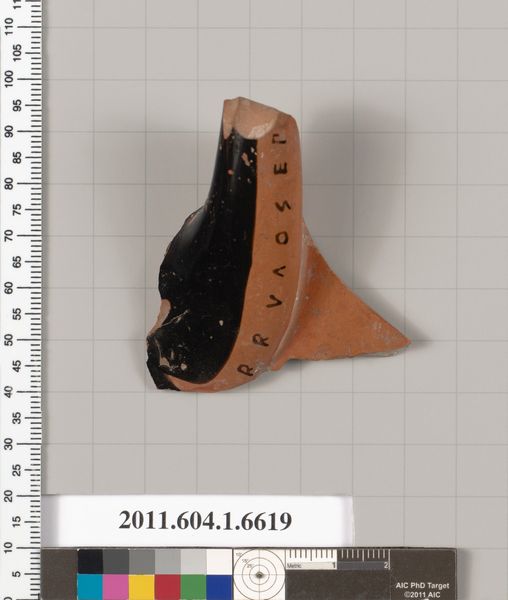
ceramic
#
greek-and-roman-art
#
ceramic
#
vase
#
form
#
roman-art
#
geometric
#
ancient-mediterranean
Copyright: Public Domain
Curator: This small fragment, a piece of a terracotta kylix, or drinking cup, dates all the way back to 530 BC. It's currently part of the collection at the Metropolitan Museum of Art. Editor: My initial impression is… understated elegance. It’s just a fragment, right? Yet that glossy black against the terracotta, even in its broken state, still radiates a powerful sophistication. It feels very “less is more.” Curator: Precisely. The piece embodies a central tension in ancient Greek art—simplicity communicating profound meaning. Its very incompleteness highlights that relationship between the lasting symbol and ephemeral functionality of an object. The kylix wasn’t just a vessel, but a part of communal drinking rituals and symbolic acts of offering to the gods. Editor: Ritual, yeah... I keep imagining the rest of it in my mind—picturing people passing it around during symposia. The shape seems almost inherently communal, encouraging sharing and conversation. It also evokes such intense memories of warm wine on cool evenings. Does that connection track with your understanding? Curator: Absolutely! We have ample historical documentation that drinking cups, and this form especially, were associated with celebrations and shared revelry—and that sense of kinship gets inscribed in the very object. Look at how the smooth lines draw the eye around the fragment. And how it focuses all the attention onto that solid pool of pure, unadorned color in the middle! Editor: It almost becomes meditative, that dark void at its core. And maybe it also serves to suggest what has been consumed in that ancient communal celebration? Curator: The color also had deep significance. This "black-figure" style—so evocative. What looks simple to us today was the apex of innovation in Athenian vase painting, a technical revolution involving complex three-stage firing that, to your point, imbued mundane pottery with symbolic aura. The color black was also often used to make silhouettes that are thought to better define narrative and dramatic scenes than other colours of the day, so it could well represent a scene that’s unfortunately missing due to its being fragmented. Editor: Wow, and here I was thinking only of elegant austerity. Instead we find ourselves circling the symbol and function. Amazing to think about what such a modest fragment communicates when properly contemplated! Curator: Indeed. In fragments, a full vision emerges.
Comments
No comments
Be the first to comment and join the conversation on the ultimate creative platform.
